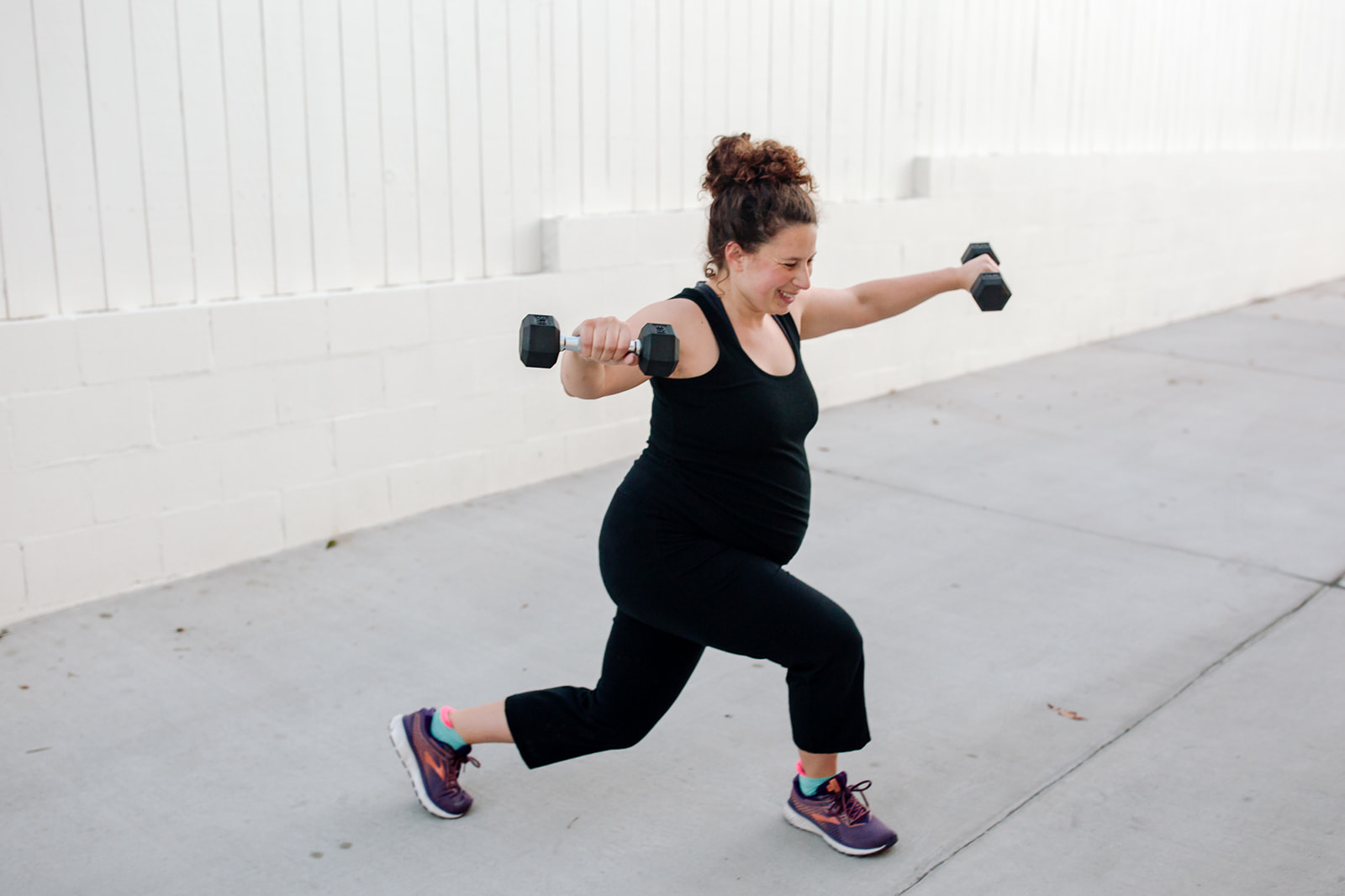
San Diego Prenatal & Postnatal Exercise Trainer
We know from empirically validated research that consistent, high-quality exercise training during pregnancy shortens labor and leads to better outcomes for mom and baby. We also know that moving in a supportive, thoughtful way after baby lessens and corrects the negative impact that pregnancy and labor can have on our bodies. But not all programs are created equal and not all coaches are specialists in the prenatal and postnatal body. At MVMNT Studio, we specialize in preconception to postpartum and beyond – your body (and your baby) is safe with us.
Prenatal Exercise Training
Labor is the longest exercise class you will ever take. So why wouldn’t you train your body and brain to be ready for the challenge?
At MVMNT Studio, we believe that education is power. The more you know about your body, the better prepared you’ll be for the marathon of labor. We specialize in:
- Mastery of diaphragmatic breath, core engagement & pelvic floor awareness
- Prenatal mobility
- Pregnancy strength training
- Labor Training (including down-training of the pelvic floor)
Q. W.
Postnatal Exercise Training
Whether it’s been 6 weeks, 6 months or 6 years, you’re forever living in a postnatal body. And that body deserves the time and energy it takes to recover your strength and feel your best. But we understand that getting back in touch with your body after baby (no matter how long it’s been) can be daunting.
We specialize in helping you create pelvic floor engagement (no more peeing your pants!), heal your core (diastasis recti repair), get mobile (no more aches and pains), and build strength.
E. O.
Prenatal & Postnatal Exercise FAQ
How Long After Giving Birth Can I Exercise?
You should always check with your midwife or doctor before beginning a training program after you’ve given birth. Some people visit us as early as 5 days postpartum to begin working on breathing strategies and gentle core engagement to support their healing. Others find us 20 years postpartum. There’s no rule. Our mantra is listen to your body – it always tells you exactly what it needs.
What is Diastasis Recti? How Do I Fix it?
Diastasis recti abdominis is a persistent separation of the abdominal wall muscles (transverse abdominis) and the connective tissue (linea alba) that joins them. It looks like “coning” or bulging of the abdomen when you sit up, twist, strain. It can also be a contributor to low back pain and urinary incontinence. It’s common (but not normal) in postpartum women.
Fortunately, there are many treatments available that can help to heal and restore core function. Coach Robin has a higher-level of training as a Diastasis & Core Consultant and a successful track record in guiding clients through healing their diastasis recti.
Schedule a free assessment with our virtual or San Diego diastasis repair coach.
How Do I Strengthen My Pelvic Floor?
Like any other group of muscles, the pelvic floor musculature works most efficiently and effectively when it can both contract and relax. Pelvic floor dysfunction (muscles that are too contracted, too relaxed or uncoordinated) can present in lots of different ways: low back pain, urinary incontinence, urinary urgency, prolapse, constipation etc. Accidentally peeing when you cough, laugh, sneeze, jump or run is common after having a baby, but not normal.
There are techniques you can implement that will help to strengthen a pelvic floor and stop these symptoms. While more complex pelvic floor disorders require the care of a specialist (a Women’s Pelvic Floor Physical Therapist), some people simply need to create awareness to improve symptoms.
During your free assessment with Coach Robin, you will be given the insight into next steps and a referral plan. If you are dealing with symptoms related to your core, don’t hesitate to speak with our San Diego pelvic floor coach.
